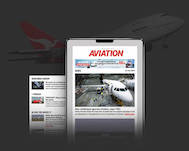On November 23 2007, Tiger Airways Australia operated its first flight. To mark the 12-year anniversary of that event, this story from the Australian Aviation archives by Geoffrey Thomas from the January/February 2008 edition looks at the entry of the low-cost carrier into the Australian market.
The headline writers and commentators had a field day with the launch of Tiger Airways’s Australian domestic services in November with feline cliches abounding as Tiger chief executive Tony Davis and arch rival Jetstar chief executive Alan Joyce traded marketing barbs.
This content is available exclusively to Australian Aviation members.
Login
Become a Member
To continue reading the rest of this article, please login.
To unlock all Australian Aviation magazine content and again unlimited access to our daily news and features, become a member today!
A monthly membership is only $5.99 or save with our annual plans.
A monthly membership is only $5.99 or save with our annual plans.
PRINT
$49.95 for 1 year
Become a Member
See benefits
- Australian Aviation quarterly print & digital magazines
- Access to In Focus reports every month on our website
MOST POPULAR
PRINT + DIGITAL
$99.95 for 1 year
Become a Member
$179.95 for 2 years
Become a Member
See benefits
- Unlimited access to all Australian Aviation digital content
- Access to the Australian Aviation app
- Australian Aviation quarterly print & digital magazines
- Access to In Focus reports every month on our website
- Access to our Behind the Lens photo galleries and other exclusive content
- Daily news updates via our email bulletin
DIGITAL
$5.99 Monthly
Become a Member
$59.95 Annual
Become a Member
See benefits
- Unlimited access to all Australian Aviation digital content
- Access to the Australian Aviation app
- Australian Aviation quarterly print & digital magazines
- Access to In Focus reports every month on our website
- Access to our Behind the Lens photo galleries and other exclusive content
- Daily news updates via our email bulletin




James
says:Oh God, I held hi hopes for Tiger but, one must look at where they are now after 12 years! And the answer sure ain’t good.
Harrison
says:If there are two I would love for Tigerair to do that would be return to the Sunshine Coast and re-start overseas flights happy birthday Tigerair you are so much better than Jetstar
Jim Ruckards
says:Why are they getting rid of the best LCC aircraft in the world? (Airbus).
When VARA are seeing increased demand for A320 operations why haven’t Virgin expanded Tiger with Airbus and the same with VARA? The efficiencies would be the same for the Boeing fleet! Sadly I feel there is something fishy going on when you have a smaller fleet of A320 making money and Tiger is not. Smells like corporate bonus chasing to me.
Jake
says:Tigerair planes, with NO Tigerair pilots or FA’s! So Scurrah sacked them all on a dime to save the mainline. Sad really.
So Scurrah decided to sack ALL Tigerair and VANZ staff rather than sell the bodies off when the going was good, leaving over 2500+ staff on the breadline! Nice way to treat your staff Scurrah.